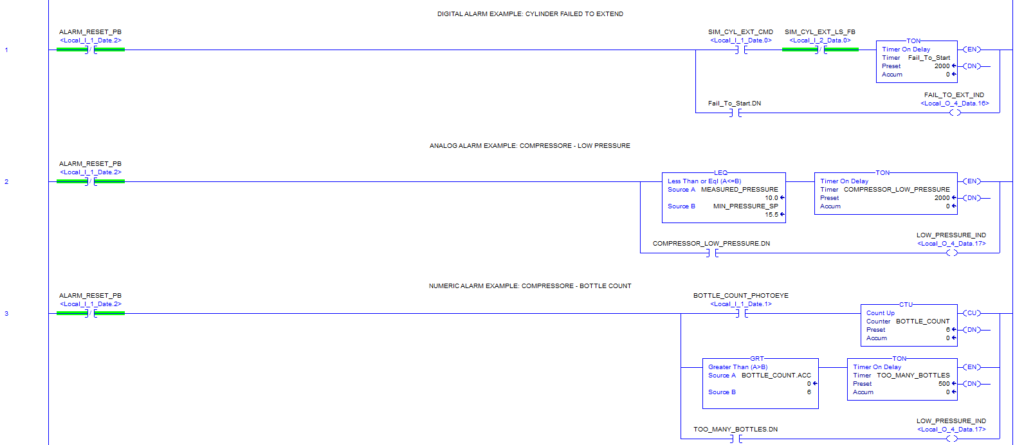PLC Programming Languages:
PLC programming languages serve as the backbone of automation systems, enabling engineers and technicians to create logical instructions that dictate the behaviour of industrial processes. In this section, we’ll provide a brief overview of the common PLC programming languages and their applications.
Ladder Logic (LAD):
Ladder Logic is the most widely used programming language in PLCs, mimicking the format of electrical relay circuits. It consists of graphical symbols representing relay contacts and coils, interconnected by horizontal rungs. Ladder Logic is intuitive and easy to understand, making it ideal for beginners and experienced professionals. It’s commonly used for discrete control applications, such as on/off control of motors, valves, and alarms.

Function Block Diagram (FBD):
Function Block Diagram is a graphical programming language that represents control functions as interconnected blocks, each performing specific operations. FBD allows for modular programming, where complex functions can be broken down into smaller, reusable blocks. It’s well-suited for applications requiring mathematical calculations, logic operations, and data manipulation. FBD is commonly used in process control and motion control systems.

Structured Text (ST):
Structured Text is a high-level programming language that resembles traditional programming languages like C or Pascal. It allows for more complex logic and control algorithms to be implemented in PLCs. Structured Text is ideal for applications requiring complex calculations, data processing, and control sequences. It’s often used in industries such as aerospace, automotive, and pharmaceuticals for advanced control applications.

Instruction List (IL):
Instruction List is a low-level programming language that uses mnemonic codes to represent individual instructions executed by the PLC. It’s based on assembly language and provides direct access to PLC memory and CPU registers. An instruction List is rarely used in modern PLC programming due to its complexity and limited readability. However, it’s still used in some specialized applications where performance optimization is critical.
Sequential Function Chart (SFC):
Sequential Function Chart is a graphical programming language used to model complex control sequences as a series of interconnected steps. SFC allows for hierarchical organization of control logic, with states, transitions, and actions represented graphically. It’s commonly used for sequential control applications, such as batch processes, state machines, and sequential operations.

